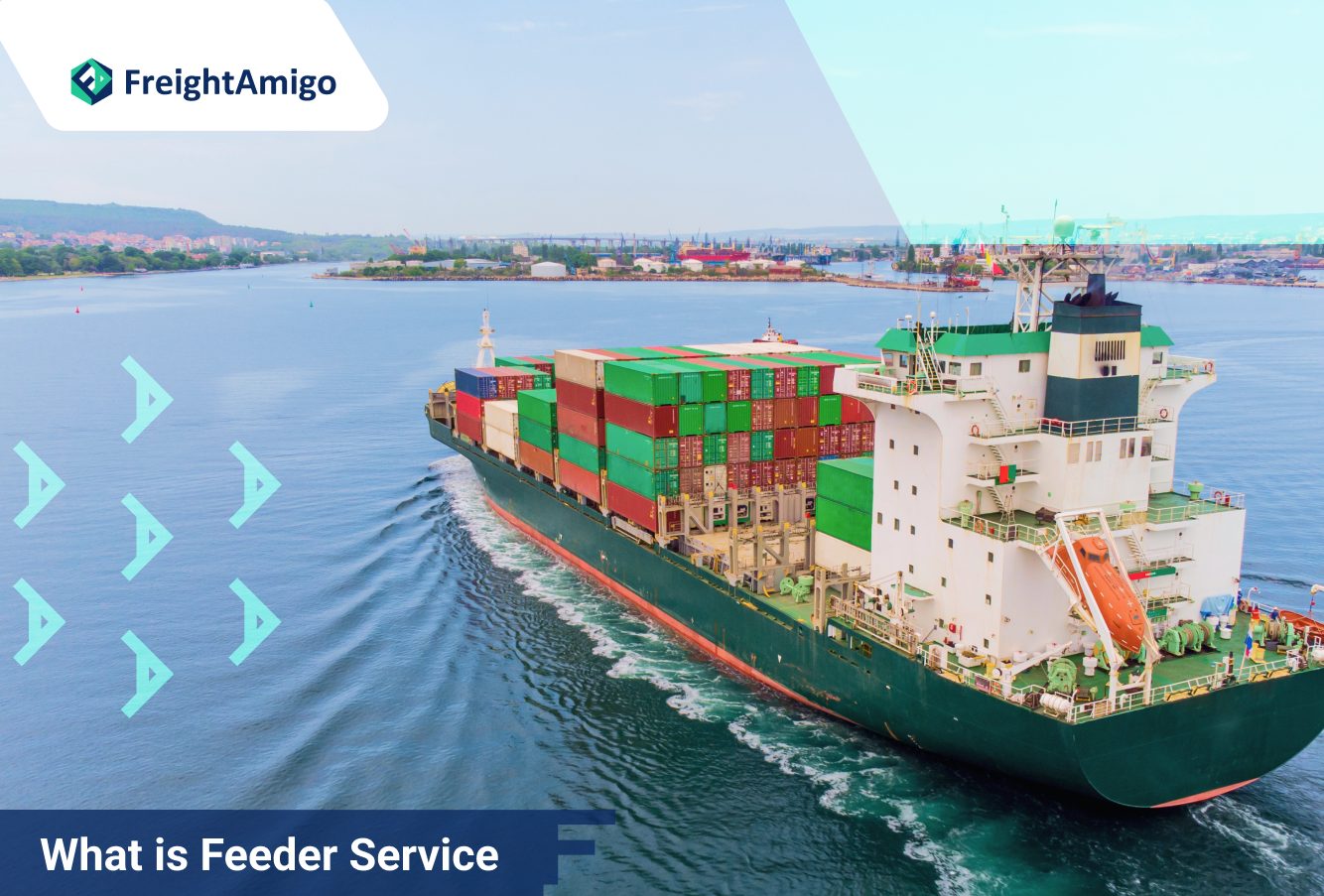What is Feeder Service
Latest update on 25 March, 2024 by Aurora Park– Marketing Analyst at FreightAmigo
In the complex web of international trade and logistics, the seamless movement of goods from one location to another is paramount. This is where feeder services play a pivotal role. Feeder services act as the vital link connecting larger, ocean-going vessels with smaller ports that are not accessible by the bigger ships, ensuring that goods can travel the last mile to their destination efficiently. FreightAmigo has written an informative article that delves into the world of feeder services, providing valuable insights into their definition, function, types of feeder vessels, and impact on the global supply chain.
Want To Compare The Best Express, Air Freight, Sea Freight, Rail Freight & Trucking Rates So As To Have Better Control On Cost?
Feeder Services Definition
Feeder services are an integral part of the logistics and shipping industry, ensuring the smooth functioning of the global supply chain. These services involve the use of smaller container ships, known as feeder vessels, which are designed to transport cargo between smaller, regional ports and major hub ports. Feeder services enable the efficient redistribution of cargo from large, central ports on massive ocean-going vessels to smaller ports that the larger ships cannot access due to their size or draft restrictions. Conversely, feeder services also facilitate the collection and transportation of cargo from smaller ports to major hub ports for long-haul international shipping.
Advantages of Feeder Services
Feeder services offer several advantages that contribute to the efficiency and effectiveness of the global supply chain. Let’s explore some of these advantages:
- Flexibility in Operations: Feeder services provide greater flexibility in terms of routes and schedules compared to larger container ships. This flexibility allows logistics operators to transport cargo to a broad spectrum of ports, adjusting transportation routes and schedules based on fluctuating market demands. This ensures that the supply chain remains responsive and resilient.
- Improved Access to Smaller Ports: Feeder vessels are specifically designed to navigate the constraints of smaller ports, which may be inaccessible to larger vessels due to infrastructure limitations such as shallow drafts or small turning basins. By bridging the gap between major hub ports and these smaller ports, feeder services enhance the accessibility of global shipping networks. This capability not only extends the reach of international trade but also supports local economies by facilitating the import and export of goods directly through their regional ports.
- Reduction of Port Congestion: Feeder services play a vital role in alleviating congestion at major hub ports. By transshipping cargo to other locations, these ships distribute the flow of goods more evenly across available ports, preventing bottlenecks and enhancing the overall efficiency of cargo movement. This reduction in congestion is crucial for maintaining the speed and reliability of supply chains, particularly during high-demand periods or when large vessels discharge vast quantities of cargo at once. Moreover, by easing port congestion, feeder services contribute to reducing delays, lowering transportation costs, and improving the environmental footprint of shipping operations by minimizing idle times for ships waiting to berth.
Types of Feeder Vessels
Feeder vessels, as integral components of the global shipping and logistics network, come in various types and sizes to cater to different operational requirements. Let’s explore the main categories of feeder vessels:
- Small Feeders: Small feeders are the smallest class of feeder vessels, with a capacity of up to 1,000 TEUs (Twenty-Foot Equivalent Units). These vessels are designed to operate in the most restricted ports with the shallowest drafts and smallest berth sizes. They offer flexibility and access to areas that larger vessels cannot reach.
- Standard Feeders: Standard feeders represent the middle tier of feeder vessels, with a capacity of around 2,000 TEUs. These vessels are capable of accessing a broad range of small to medium-sized ports, making them versatile assets in the feeder service network. They are adept at managing regional cargo distribution, connecting secondary ports with larger hub ports.
- Feedermax: Feedermax vessels are the largest category of feeder ships, designed to carry approximately 3,000 TEUs. Their size allows for efficient transport of goods to and from larger regional ports that might still be too small for the mega container ships used in major international trade routes. Feedermax vessels provide a crucial bridge between the largest hub ports and regional ports, optimizing the distribution network.
Feeder Services in Action
To understand how feeder services operate, let’s take a closer look at the typical journey of a feeder vessel:
- Transit: Feeder services begin their journey by sailing to a larger hub port. Feeder ships are designed to operate within regional seas or between nearby ports. During their voyage, they may stop at various intermediate ports to either pick up or drop off cargo, effectively gathering or distributing goods across different locations before reaching their main destination.
- Cargo Unloading at Hub Port: Upon arrival at the hub port, the cargo carried by the feeder vessel is unloaded. This process involves the use of cranes and specialized unloading equipment to transfer cargo from the feeder vessel to the dock. The cargo is temporarily stored at the port, awaiting its next leg of the journey.
- Transshipment: The key function of feeder services comes into play here. The unloaded cargo is transshipped onto larger container ships that are capable of long-distance ocean voyages. These larger vessels connect the hub port with distant international destinations, facilitating global trade.
- Return Trip: Once the cargo has been successfully unloaded and transshipped, the feeder vessel prepares for its next assignment. It might return to the ports it previously visited to collect more cargo or proceed to other regional ports. The feeder vessel’s route is determined by the demand for cargo transport in the region and the strategic importance of the ports it serves.
By continuously shuttling between smaller ports and larger hub ports, feeder services ensure that goods can move efficiently from local origins to global markets, and vice versa. This system allows even regions with smaller ports to actively participate in international trade, making the global shipping network more accessible and interconnected.
Conclusion
Feeder services play a critical role in the global shipping network, connecting smaller ports with major trade lanes serviced by larger container ships. These services ensure the efficient movement of goods, provide improved access to remote locations, and alleviate congestion at major hub ports. Feeder vessels, categorized based on their size and capacity, navigate the constraints of smaller ports, ensuring the accessibility and interconnectedness of global shipping networks.
There Are Different Options For Cargo Transportation. If You Want To Choose The Most Convenient And Suitable Solution, It Is Best To Have The Full Support Of Logistics Experts! If You Are Planning To Ship Goods Overseas, Please Go To The FreightAmigo Page For Inquiries.
Read More:
What is Rolled Cargo | Comprehensive Guide | FreightAmigo
The Future of Credit Decisions in Supply Chain Operations | FreightAmigo
Exploring Benefits of Robotics and Automation in Factories | FreightAmigo
If you have any inquiries on logistics/supply chain, feel free to contact FreightAmigo now:
Chat with us online | Hotline: +852 28121686 | WhatsApp: +852 27467829









































